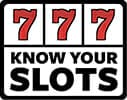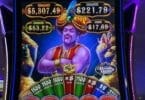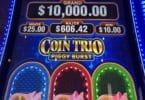As a comment on one of my recent myth busting videos with The Jackpot Gents, a player stated his lack of understanding about why people care about payback percentages:
Josh’s comment about payback % and short sessions is exactly why I don’t see what the obsession is with them. The set payback % is based on millions of spins. In any one session on a machine it can payback much more or much less then the set payback %.
There’s a couple of reasons why the payback percentages ultimately matter, and better payback is the better choice.
From one perspective, there’s the point that many gamblers don’t play a short session here and there – they’re regular visitors to the casino. If you’re playing an hour of slots a year, the short term variance is going to be vast. But most players go once a month, once a week, and many go even more often.
Take an example of a player who visits a casino once a week and plays two hours a day. You can easily accomplish 500 wagers on a slot per hour. So in one visit, you can do 1,000 spins. Across a whole year, that’s 52,000 spins.
While it’s not all the way to where a slot would be most likely to achieve its objective, it’s pretty far along the path, and that variance narrows quite a bit.
The other perspective is from a long-term money lasting perspective. If you’re playing a slot that offers 88 percent payback on penny slots, and you did a $1 wager for each of those 52,000 spins (for easy math), your expected payback would be $45,760 and your theoretical loss would be $6,240 – about $120 per casino visit, on average, although variance will swing in both directions on any individual visit.
Now let’s say that same $1 a spin was on a higher denomination with 92 percent payback. that same $52,000 in wagers would pay back an expected $47,840 and have an expected theoretical loss of $4,160 – a third less than the first scenario, and an average theoretical loss would be only $80 per visit.
The reality is because we do so many wagers, so fast and so frequently on games like slots, higher payback becomes important pretty quick, whether it means your money lasts longer, you get more big wins to stay in the game, or manage to hang on long enough to get that really big one. When your money burns faster, your chances for any of that simply is reduced because you’re not getting as much replenishment.
And while a single session can certainly outperform the average, I’ve seen stats that have some slots aiming to offer winning sessions to just 1 in 5 players, so it’s likely that you’ll have a losing session more often than a winning one, perhaps not a surprise given the games are designed to keep a percentage of the bets over time.









Are there low volatility slots where my chances of my money lasting longer are probable?
I visit Vegas three or four times a year and am primarily a video poker player. I study and practice different VP games so my money can last. I want to spend 10 – 15 percent of my time playing slots, but this always seems costly. This is true even though I only play $.25 and up slot denominations.
Any thoughts?
Thanks,
Ken
Hi Ken – yes! Check out this previous post on low volatility slots for a few examples, and if you search my site for “low volatility” you’ll find other write-ups of games as well.